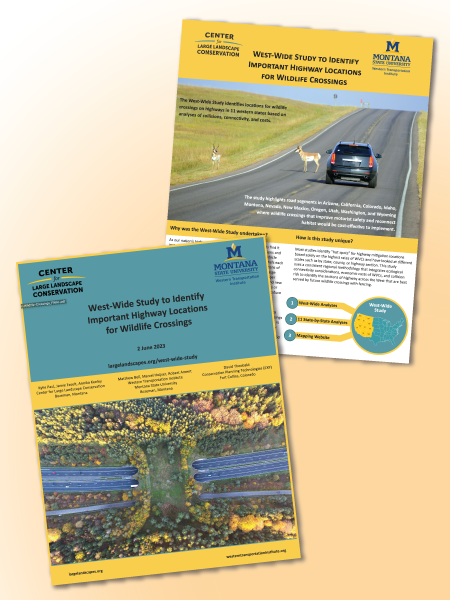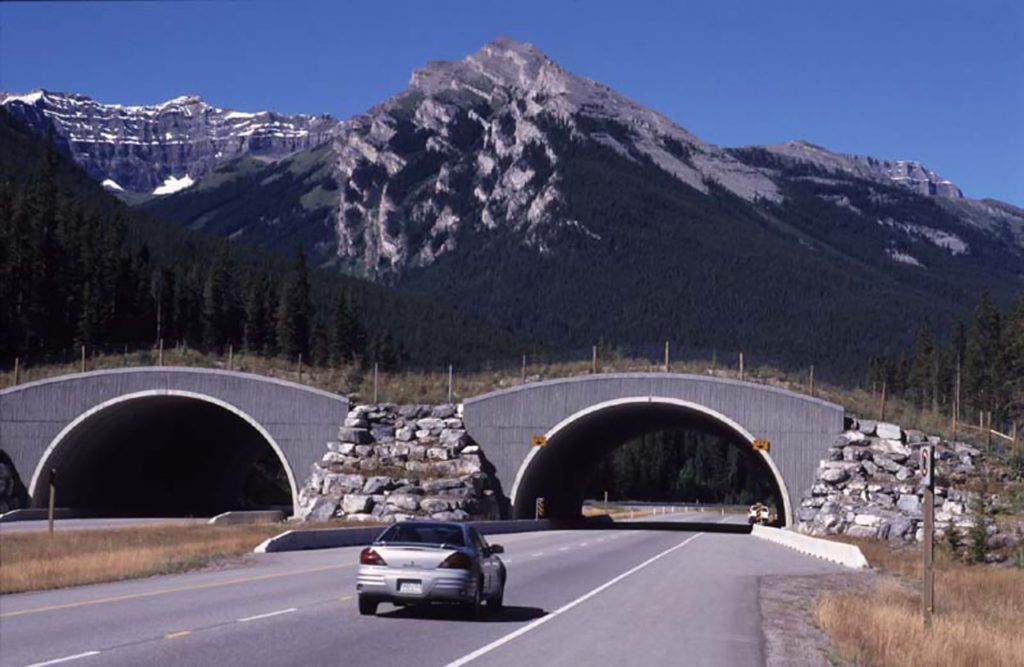New Study Identifies Potential Animal Highway Crossing Locations Across Western U.S.

Increasingly busy highways and fragmented habitats have boosted the number of wildlife-vehicle collisions (WVCs) in the U.S. each year. Dangerous to both animals and humans, these collisions kill more than one million large mammals and hundreds of humans per year and cause tens of thousands of injuries. To begin addressing these collisions, the nonprofit Center […]
New IUNC Report from Rob Ament and Tony Clevenger
Rob Ament, the Road Ecology Program Manager at WTI, Dr. Tony Clevenger, a WTI Senior Research Scientist, and their colleague Dr. Rodney van der Ree of Australia, are the lead editors of a new technical report published by the International Union for Conservation of Nature (IUCN) and its World Commission of Protected Areas. Titled “Addressing […]
New Publication: NCHRP Publishes Study on Valuing Wildlife Crossings

National Geographic Interviews WTI Road Ecologists for Feature Article
WTI’s decades of research on wildlife crossing structures received a very prestigious “shout out” last week – a feature article by National Geographic. “How wildlife bridges over highways make animals—and people—safer” describes how these structures have led to major reductions in the number of collisions between animals and vehicles, specifically mentioning the structures in Banff […]
Brazilian road ecologist with WTI connections wins prestigious international conservation award
Fernanda Abra, a Brazilian Ph.D. student who has conducted wildlife research with a leading WTI road ecologist for nearly a decade, is one of only three scientists worldwide to be selected for the 2019 Future For Nature Award, announced on February 19. A few months ago, eight young conservationists from around the world were nominated […]
North Carolina Newspaper Features Huijser Interview
When the Citizen Times in North Carolina wants to know about wildlife crossings, its reporters call on WTI Road Ecologist Marcel Huijser. Columnist Bill McGoun interviewed Marcel about the installation costs of wildlife crossings and fencing for an opinion piece last week, entitled “In rural WNC, human must progress in harmony with wildlife.” As part […]
Huijser Interview on Wildlife Crossings
The Asheville (NC) Citizen Times interviewed WTI Research Scientist Marcel Huijser for the feature article “Bridges for Bears: Do Wildlife Corridors Work?” Marcel discusses wildlife crossing structure success stories in Banff National Park and on U.S. 93 in Montana. Read the full interview or learn more about the WTI Road Ecology program on our website. […]
Road Ecology Researchers Take the Spotlight at International Conference
In September, the Infra Eco Network Europe (IENE) held its International Conference in the Netherlands, focusing on the theme of “Crossing borders for a greener and sustainable transport infrastructure.” WTI’s Road Ecology staff members were front and center throughout the 5-day event, presenting their research and experience on wildlife crossings, habitat connectivity, and related topics to […]
Wildlife Crossings Master Plan Featured in Jackson Hole News
Last week, the Jackson Hole News and Guide published a feature article on the Teton County (Wyoming) Wildlife Crossings Master Plan developed by WTI. The draft Plan, which was recently presented to County Commissioners, identified priority sites for wildlife mitigation and recommended site-specific solutions. As part of the plan, twelve sites were proposed for wildlife […]
WTI Road Ecologist Delivers Keynote in Australia
Last week, Marcel Huijser opened the 2018 Australasian Network for Ecology and Transportation (ANET) Conference, in Melbourne, Australia with a keynote address entitled “Road Ecology – Are We Taking the Right Turns?” The Conference, co-hosted by the Environment Institute of Australia and New Zealand in Victoria, explored the theme “Connecting nature, connecting people.” Marcel also […]
